Looking forward - Sandy Cumming, Chief Executive of Highlands and Islands Enterprise
22nd August 2007

This article is from the HIE network 2007 report
To read the full report go to -
HIE network 2007 This is a Pdf doc
HIE has just come through a period of extensive internal change, reshaping its structures to deliver a new set of strategic priorities.
Yet Sandy is aware that serious challenges still need to be addressed by HIE and its partners. Here, he assesses the scale of some of these challenges and shows how HIE is continuing to adapt to meet the new opportunities of the 21st century.
You've described 2006-07 as an exceptional year for the HIE network. In what ways?
I think it became an exceptional year because of the degree of internal change which we
managed to take forward while at the same time keeping sight of our external focus, in
particular the progression of a number of key strategic projects. Those two elements madeit a very special year. Reducing from 10 local enterprise companies to nine was a bold decision. That was a big challenge, but I am convinced it was the right thing to do. The two new LECs [HIE Skye andWester Ross and HIE Inverness and East Highland] are well established.
What are the benefits of the new structure?
On the west coast, I can see a real galvanising of thinking and strategic vision for Skye
andWester Ross. I do think that we're now beginning the process of looking five, ten years ahead in that particular community which respects the synergies between
Skye andWester Ross and starting to plan new investment.
What we're getting in the inner Moray Firth, with the creation of HIE Inverness and East
Highland, is the ability to address that very important inner Moray Firth labour market
and sub-economy in a unified way along the A9 corridor. Our previous structure placed a boundary at the Kessock Bridge - and originally one at Badenoch and Strathspey as well - whereas now the whole is greater than the sum of those three parts.
Let's look at some of those strategic projects which are currently under way.What would
you say is the importance of a project like the Centre for Health Science?
What's really important is not just that it offers tremendous opportunities for the next
decade and beyond for a significant cluster of health science related activity to be based
in Inverness, but that those opportunities are extended to the wider Highlands and Islands. The original vision came from the HIE network and our ability to project manage a
very complex set of negotiations enabled the public sector partners to buy in to the project.
That showed HIE in a new role.We have been moving progressively away from the classical investment role to demonstrate our ability as a leader, as an organisation that can actually procure new assets, see new opportunities and manage very complex projects. So it was really a turning point for us as an organisation. And I think it offers us a fantastic opportunity now to realise the potential benefits of having a regional hospital of the quality and size of Raigmore, combined with the power of Scotland's leading life science company, Lifescan Scotland, and all within the context of the emerging University of the Highlands and Islands. The combination of these three elements is very powerful.
I think it also shows that we're prepared to invest for the long term. The lead-in time for this project has been over five years or so. And realising the full benefits of that investment will probably take another five to ten years.
How do you feel Highland 2007 is going?
I think it's captured the minds of a lot of people in the Highlands and Islands and
beyond. A lot of creativity, a lot of talent has been nurtured as a result. There's been
a real excitement and activity in communities throughout the Highlands and Islands, and it's helping us bring the Highlands and Islands message to a wider audience, throughout the rest of Scotland and internationally. It's putting us on the map in a different context.
Again, it's a magnificent partnership.
The leadership of Highland Council, our Network's involvement, and the relationship with the Scottish Executive, have worked tremendously well. The thing to remember is that it's not just about the large-scale events, the big rock acts and festivals. I got a particular buzz from Mulbuie School winning a national enterprise award, and the seed was sown by Highland 2007. So we're beginning to see all kinds of benefits. But the challenge is: how do we build on that? The challenge is the legacy. What we have to make sure is that 2008 is culturally stronger than 2006, and 2009 is stronger again. Our ambition is for continuous improvement for this kind of activity in the Highlands and Islands.
UHI has had to put back its timescale for gaining university title. How happy are you with progress otherwise?
When we started out on this project - and we were part of the original design - we knew
the journey would be a long one and we were prepared to be there for the length of that
journey. I think it was a very tough target to achieve taught degree awarding powers in
2007, but UHI came very close. There's every reason to believe that taught degree awarding powers can be achieved, if not by the end of 2007, then early 2008.
But I think also that sometimes a check or a setback can often be converted into apositive outcome. I think this has made all the key stakeholders in UHI take a fundamental look at the University of the Highlands and Islands, fully recognise how important it is to the area and actually reaffirm our commitment. That's what HIE has done as an agency because we've used the QAA report to work with UHI to identify some opportunities to strengthen the organisation. So I think a lot of positives will come out of this.
UHI has been described as the most important single project in the Highlands and Islands. Does that still hold true? I think it does. In terms of impact in every single part of the Highlands and Islands, I can't think of another project as significant. There are high impact projects affecting specific communities - Dounreay decommissioning in Caithness for instance. How we deal with that will clearly have a huge impact in that area. But if you're looking at one project which will have an impact from Unst right down to the Clyde islands, and from the Outer Hebrides through to Moray, the big one undoubtedly is UHI.
Caithness appears to be a particular challenge at present. How is HIE gearing up to deal with the consequences of Dounreay decommissioning?
There's no question that these are challenging times for Caithness and north Sutherland. The decommissioning process ismoving apace and we and our partners have moved quickly to get a strategy in place for dealing with the rundown of employment associated with the former nuclear operations. I think we're now building a very successful partnership model for the future. I remain very optimistic for Caithness and north Sutherland.
There is no bigger challenge affecting a local area in the HIE network at the moment.
How do you replace 2,500-plus of the region's best paid jobs in a community of maybe
15,000 employees? With our partners, we're focusing very firmly on the new economy. We're asking, how should the economy of Caithness and north Sutherland look in 10 or 15 years? We see great opportunities in the energy sector, to take one example, particularly marine renewables.
We need now to develop some ideas on how those opportunities can be taken forward.
We need to rise to the national challenge on tourism too, so I would like to achieve at
least 50 per cent growth in the tourism sector in Caithness and north Sutherland in the next decade.We need similar high aspirations for food and drink. Caithness was famous for the quality of its food and primary products long before Dounreay became such an
important part of the economy. So that's a key underlying strength whose time has
come again. The success achieved by Mey Selections and the North Highland Initiative
is very encouraging.
There are also great opportunities in research related activities in Caithness.We have a couple of excellent institutes working in decommissioning and also in the field of environmental research, which are areas ripe for growth. And I think there's also scope
to grow public sector activity in Caithness.
We'll be looking for new opportunities for public sector administration to be established
in the county.We'll be focusing on achieving some early successes, but, more importantly, building a long-term, sustainable future for that part of our area.
You mentioned renewable energy.What's your take on the progress that the area is
making generally in that field?
Let me just relate that back to Caithness for a second.We've heard some wonderful ideas about how we're going to make use of the Pentland Firth, and I share that excitement, though I'm aware it's a long journey. The model I'd like to take forward in Caithness is very similar to what Shetland did in relation to the earlier exploitation of oil.We need something similar to the creation of the oil reserve fund that came out of the smart deal the Shetland local authority struck with the oil companies last century. That way, we'll create a legacy which will bring tremendous investment opportunities for the wider community for decades to come. As an energy resource, the Pentland Firth could
become the new Dounreay, in the sense of an engine for growth for that area.
Looking more widely, I'd have to admit that we have yet to see some of the early promise
of renewable energy realised. For all the high percentage of renewable energy resources we have in the Highlands and Islands, the benefits have not really come to market yet and that's a disappointment, both for potential manufacturers, the supply chain and local communities. But the opportunity is still there.We haven't lost out. It's just taking longer than anyone thought. Strengthening the national grid is a key issue. How do you connect the fantastic resource of our islands, whether it's wind, wave, or tidal, and how do you make the Pentland Firth or theWestern Isles a powerhouse for the rest of the country? It's grid connectivity that has to be improved. Once resolved, the opportunities for this region are massive.
There's a lot of debate about the relative merits of different technologies, particularly
onshore wind, and we have to respect the views of the local people. At the same time,
I don't accept the argument that you can't have both a successful tourism industry and
a successful renewable energy industry. These are not mutually exclusive. You just
need to go somewhere like the Navarre region of Spain to see how, with careful planning
and design, you can achieve win-win for all interests. That's why we're working to raise
awareness in the Highlands and Islands of the incredible opportunities that renewable
energy could bring to communities throughout this area.
Another issue which affects the whole of the Highlands and Islands is broadband. How is that progressing?
I've been very pleased with broadband rollout, though there are still a last few areas where we need to plug the gaps as soon as possible. The second point is that business usage of broadband has been increased quite dramatically in the last year.We're getting closer to the national average and aim to get beyond that. And thirdly, I am particularly proud of HIE's investment in Distance Lab, which has really come alive in the past year. Using technology as a smart way to shrink distance has to be part of the sustainable future of the Highlands and Islands. Distance Lab's success will be of major significance to our area.
Broadband is moving to its next generation, of course, and that will require continuous
investment to ensure that Highlands and Islands communities are at the forefront. The task goes on.
You've mentioned sustainability. What's the challenge for HIE and the Highlands and Islands?
Sustainable development is now at long last being taken seriously by governments throughout the world and I think there is a much stronger awareness by individuals, communities and businesses about the whole concept. HIE has been very much alive to the notion of sustainable development since its origin in 1991 and I'm excited that, through Willy's leadership, we're reaffirming our mission to be an agency that has sustainable development at the heart of what we do.
I want HIE to be an exemplar in the way we do business too, not just the ventures we
support. So we're looking at how we procure, how we travel, how we make transactions,
how we recycle some of the resources we use.We're a major organisation in the Highlands and Islands and it's important we practise what we preach.
The other aspect is the kinds of businesses we want to attract to the area. Any region
wants to attract the businesses which are still going to be there in 10 or 15 years' time.
Organic food production is a prime example, a 'tap-in' in football speak.We want to see
more and more hotels, schools, businesses and consumers demanding local food.
Similarly, our aspiration for population growth is in every part of the Highlands and Islands. We are not seeking to expand the population base of the inner Moray Firth while more remote areas shrink.We recognise that population growth is important throughout
the Highlands and Islands.
This article is from the HIE network 2007 report
To read the full report go to -
HIE network 2007 This is a Pdf doc
Related Businesses
Related Articles
Workforce North event spotlights Highland economy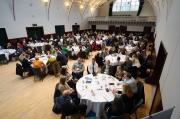
EMPLOYERS and educators from across the Highlands have gathered to hear how a new initiative is aiming to transform the region's economy. Workforce North - A Call to Action brought together business leaders and teachers from primary and secondary schools from across the Highland Council area with a wide range of partners geared towards education, learning and skills development at Strathpeffer Pavillion.
Tartan challenge for UHI students offers £1,500 prize
Students from across the University of the Highlands and Islands (UHI) partnership have been challenged to design a tartan and be in with a chance of winning a £1,500 cash prize. Highlands and Islands Enterprise (HIE) has launched THE COMPETITION to mark 60 years since the regional development agency (then named Highlands and Islands Development Board) was established in November 1965.
The Rural AI Roadshow - How AI can help your rural business thrive
Scotland's enterprise agencies (Scottish Enterprise, Highlands and Islands Enterprise, South of Scotland Enterprise) The Scottish AI Alliance and The Data Lab have joined forces to plan and deliver an inspiring and educational Rural AI Roadshow. There will be three, one day, Rural AI Roadshow conferences taking place across Scotland in January 2026.
Digital and AI innovation round-up for November
Scotland's digital future is accelerating, with AI and tech innovation transforming businesses. In this blog, HIE's Theresa Swayne shares November insights on funding, leadership, and how organisations can harness technology to stay ahead.
Reflections from SEWF Rural: global lessons for the Highlands and Islands social impact economy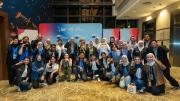
As we mark 60 years since the region's economic and community development agency was established, it's timely to reflect on the global aspects of our work on shaping rural futures. The recent Social Enterprise World Forum (SEWF) Rural Gathering in Sabah, Malaysia, welcomed changemakers from Australia, Ireland, India, Canada.
Scottish Entrepreneurial Ecosystem Guide - FREE To Download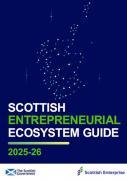
Scottish Enterprise's Entrepreneurial Ecosystem Guide provides an overview of more than 150 organisations that support new and growing companies in Scotland. The guide includes incubators, accelerators, specialist industry programmes, co-working spaces and networking organisations.
Funding approved for Wick Harbour port consultant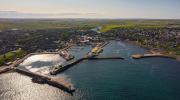
A specialist ports consultant has been appointed to develop a long-term strategic plan for Wick Harbour Authority (WHA) in Caithness. WHA has secured £47,775 from Highlands and Islands Enterprise (HIE) and the Nuclear Restoration Services, NRS Dounreay towards the cost of the services.
Enterprise and innovation agencies join forces in new framework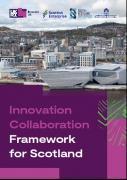
Scotland's three enterprise agencies have joined the UK's national innovation agency to agree a collaboration framework that aims to help Scotland become one of the most innovative small nations in the world. The Innovation Collaboration Framework for Scotland brings together Highlands and Islands Enterprise, Scottish Enterprise, South of Scotland Enterprise and Innovate UK with a commitment to support ambitious businesses to invest in research to drive economic growth, create good jobs and help tackle major societal and environmental challenges.
£3.4m HIE investment in Arnish Road, Stornoway
The project, led by the Stornoway Port Authority, will involve upgrading the full length of the 3.3km Arnish Moor Road. Highlands and Islands Enterprise (HIE) has approved a £3.4m contribution to a £7.2m public funding package for a major project to transform road access to strategic industrial and port sites on the Isle of Lewis.
As HIE reaches 60, new chair says best is yet to come
The newly appointed chair of Highlands and Islands Enterprise (HIE) says the region is on the threshold of a new era of economic growth. Angus Campbell's term as chair began officially on 1 November - 60 years to the day since HIE's forerunner, the Highlands and Islands Development Board (HIDB) opened for business with just six employees.
